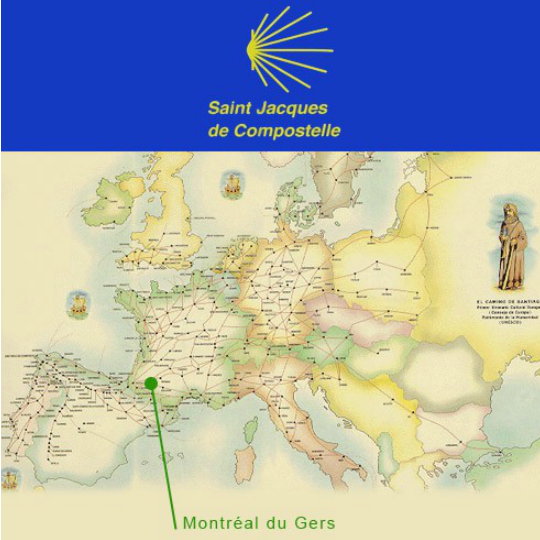Santiago de Compostela is a city in the historic region of Galicia in northwest Spain, which attracted millions of pilgrims during the Middle Ages.
Rome, Jerusalem, and Compostelle were major pilgrimage destinations in medieval times. In France, the sanctuaries of Mont Saint Michel, Rocamadour, Notre Dame du Puy, Sainte Madeleine at Vezélay, Tours and St Martin’s tomb completed the holy places.
The pilgrimage to Compostela began around the year 830AD, with the discovery of the the tomb of the Apostle Jacques (St. James). It is believed that James went to Spain to convert the populace. Then, back in Jerusalem he was martyred. His disciples put his body in a small boat which was guided through the Mediterranean Sea and back up the coast of Portugal to the final destination in Galicia. Once there, his followers held a burial worthy of a martyr in what is called the Field of the Star, in Compostela.
After the discovery of the tomb in the 9th century, the pilgrimages were organized on a greater scale due to St Jacques (James) having become the patron saint of Spain and representing the struggle against the Moors, who had occupied the country for the previous century.
Apparently the organisation of the pilgrimage was a Grand Idea from the order of Cluny and at the onset of the 12th century the pilgrimage guide described four paths crossing France which all converged in the western Pyrenees, forming only one route, "el camino francès", which ended in Compostela.
The four paths originate in Tours, le Puy en Velay, Vézelay and St Gilles in le Gard. The three western routes end in Ostabat, in the Basque region, and the one route coming from Provence passes through Somport, and they then converge in Puenta la Reina to become the Royal Road.
Nowadays, the GR 65 or Via Podensis coming from le Puy en Velay passes through Montréal. The GR 654 coming from Vézelay joins the GR 65 in Montreal.
The Pilgrimage Routes leading to Santiago de Compostela

In 1400, archives from Montréal indicate that there was a St Jacques Street and an old hospital on the ramparts which welcomed the pilgrims and provided shelter during their stay in the village.
At the centre of the Place de la Bastide, the Tourist office will welcome you and provide you with all the information you will need in order to start or continue your excursion towards Santiago de Compostela.
Four footpaths and hikes are indicated by arrows around Montreal.
Descriptive cards and guides are available in the Tourist Office and will enable you to discover our armagnacaise village with its rich Gallo-Roman and Romanesque heritage dating from the Renaissance and the 18th century.
![]()

